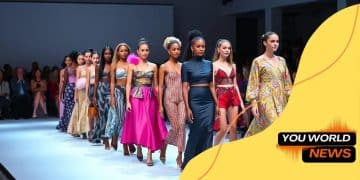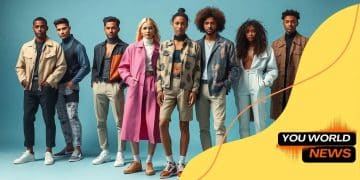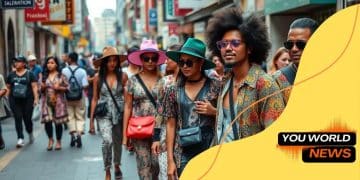Sustainable beauty standards in modeling
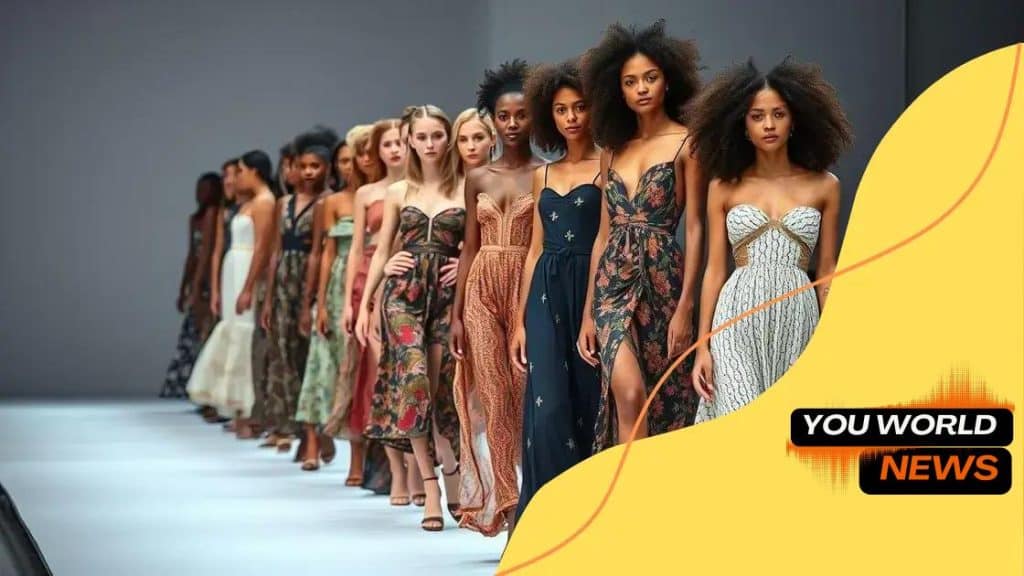
Sustainable beauty standards in modeling prioritize eco-friendly practices, inclusivity, and diverse representations, shaping the fashion industry towards a more responsible and authentic future.
Sustainable beauty standards in modeling are gaining momentum, transforming how we perceive beauty in the industry. Have you noticed the shift towards more inclusive and environmentally conscious practices? This article dives into the evolving landscape and what it means for the future.
Defining sustainable beauty standards
Defining sustainable beauty standards is essential to understanding the future of the modeling industry. These standards are reshaping how beauty is perceived and celebrated. It’s important to recognize that sustainability goes beyond just environmental concerns; it also encompasses social and economic factors.
What Are Sustainable Beauty Standards?
Sustainable beauty standards focus on practices that promote eco-friendliness and inclusivity. This includes using materials that are biodegradable, cruelty-free, and safe for both consumers and the environment. It also means representing a diverse range of body types, ethnicities, and ages in modeling.
Key Aspects of Sustainable Beauty
- The use of natural and organic ingredients in beauty products
- Transparency in product sourcing and production processes
- Support for fair labor practices within the industry
- Encouragement of self-acceptance and body positivity among models and consumers
As the modeling industry embraces change, it becomes crucial to foster a culture that emphasizes diversity and inclusion. The shift towards sustainable beauty not only empowers models but also allows consumers to feel more connected to the products they use. This connection can lead to healthier choices and a more positive body image.
With these evolving standards, we begin to see brands adopting practices that reflect a commitment to sustainability. These changes are visible in marketing campaigns that celebrate diverse beauty and challenge traditional norms. Recognizing beauty in all its forms helps to expand societal definitions and encourages individuals to embrace their uniqueness.
The Importance of Representation
At its core, sustainable beauty standards advocate for genuine representation. This means showcasing individuals of various backgrounds, sizes, and abilities. When more people see themselves reflected in media, it fosters a sense of belonging and confidence.
In conclusion, defining sustainable beauty standards signifies a pivotal shift in the modeling industry. By focusing on sustainability, diversity, and respect for individuality, the industry is moving towards a future where beauty is accessible for everyone, paving the way for a more inclusive world.
The impact of diversity in modeling
The impact of diversity in modeling is profound and far-reaching. By embracing a wider range of characteristics, the fashion industry is not only enriching its creative expression but also reflecting society more accurately. This shift allows for a more inclusive portrayal of beauty, breaking away from traditional stereotypes.
Benefits of Diversity in Modeling
A diverse representation in modeling offers numerous benefits. It plays a critical role in shaping public perception and acceptance.
- Promotes body positivity and self-acceptance.
- Encourages brands to create products for a wider audience.
- Inspires confidence in individuals from various backgrounds.
- Enhances the authenticity of fashion campaigns and editorial work.
As consumers are exposed to various forms of beauty, they begin to embrace their unique traits. This acceptance helps to cultivate a culture where everyone feels valued, regardless of their shape, size, or skin color. The messages sent through modeling are crucial to developing healthy standards and norms in society.
Breaking Barriers
With the rise of diverse models, there has been a noticeable shift in the types of campaigns launched by major brands. Companies are beginning to notice that audiences resonate more with advertisements that feature relatable models. This also empowers aspiring models who might have previously felt excluded from the industry.
Representation leads to more opportunities for talent in various demographics, allowing for authentic storytelling in fashion. By seeing themselves in advertisements, individuals feel a personal connection to the brands, fostering loyalty and engagement.
Furthermore, diversity in modeling challenges conventional beauty standards. As more brands adopt inclusive practices, the traditional ideals of beauty are questioned, paving the way for newer, broader definitions that appreciate individuality.
Real-World Examples
Several campaigns have successfully integrated diversity in modeling, showcasing models of all sizes and ethnicities. These efforts demonstrate the fashion industry’s potential to promote inclusivity. Brands that prioritize diverse representations are not only appealing to a growing segment of consumers but are also making a significant social impact.
In conclusion, the impact of diversity in modeling is transforming the industry into a more inclusive and representative space. By showcasing a wider array of beauty, the modeling world is setting new standards for acceptance and empowerment.
Current trends in sustainable modeling
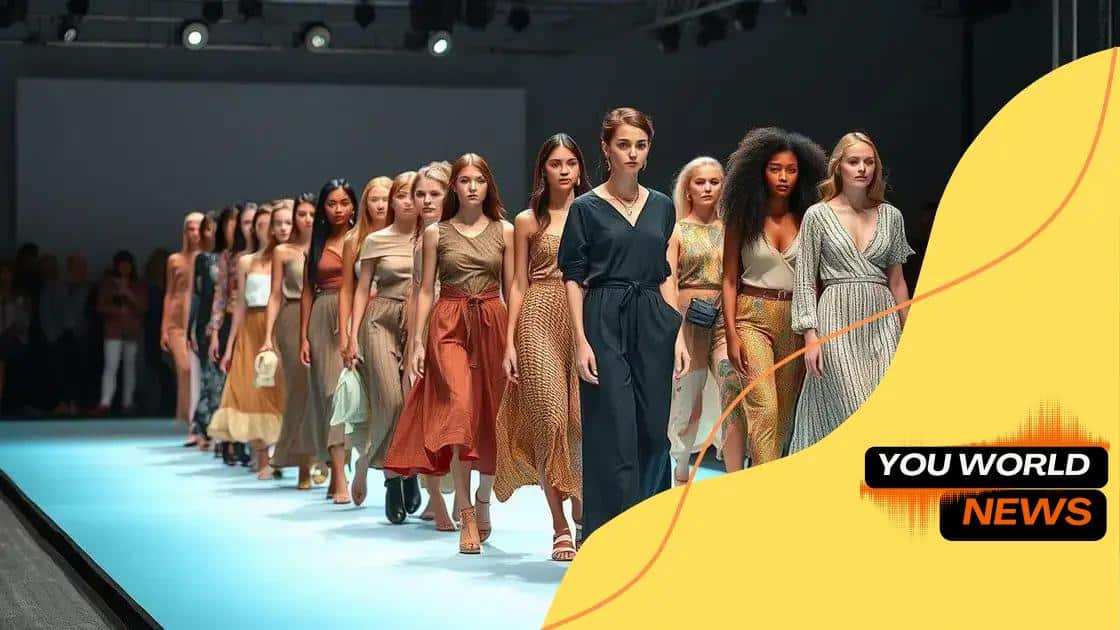
Current trends in sustainable modeling reveal a significant shift towards eco-friendly practices and inclusivity in the fashion industry. These trends are changing not only how models are represented but also the overall approach to fashion shows, advertising, and product development.
Eco-Friendly Fashion Choices
One of the most notable trends is the emphasis on using sustainable materials. Designers are increasingly opting for textiles that are produced with minimal environmental impact. This includes organic cotton, recycled materials, and vegan fabrics.
- Brands are focusing on reducing waste by implementing recycling programs.
- Made-to-order fashion is gaining popularity, decreasing the amount of unsold inventory.
- Natural dyes are being used to minimize the chemical footprint of clothing.
These thoughtful choices contribute to a healthier planet while still maintaining style and beauty. Consumers are becoming more aware of their purchasing power, often seeking out brands that align with their values.
Inclusivity on the Runway
Another critical trend is the push for inclusivity on runways and in advertising. Models of all shapes, sizes, and backgrounds are being celebrated. This representation extends to age, ethnicity, and ability, promoting a more comprehensive definition of beauty in the industry.
Fashion shows are increasingly showcasing diverse talent, creating a space where everyone feels represented. By highlighting different body types and cultural backgrounds, brands can resonate more deeply with their audiences and foster loyalty. This inclusivity encourages consumers to embrace their unique qualities and feel empowered by their appearance.
Technology in Sustainable Modeling
Technological advancements are also playing a vital role in sustainable modeling. Brands are using virtual fashion shows to reduce travel emissions and waste. Digital clothing is becoming more common, allowing consumers to experience fashion without harmful environmental effects.
The fusion of technology with sustainability is an exciting frontier. Brands are leveraging platforms like social media to promote their sustainable practices and engage with a wider audience. This digital approach enhances awareness and educates consumers about the importance of sustainability in fashion.
The focus on current trends in sustainable modeling reflects a broader societal shift towards responsible consumerism. As more individuals advocate for change within the fashion industry, these trends are likely to grow and evolve, setting new standards for the future of beauty.
Challenges faced in adopting new standards
Challenges faced in adopting new sustainable beauty standards in modeling are significant and multi-faceted. While the movement towards sustainability is growing, there are several hurdles that both the industry and consumers must overcome.
Resistance to Change
Many established brands have operated under traditional beauty standards for years. Transitioning to new methods can be daunting, causing resistance among stakeholders. This resistance often stems from fear of losing profit margins or alienating loyal customers.
- Adjusting to sustainable practices may involve higher costs initially.
- Older generations within the industry might prefer conventional processes.
- Some consumers are not yet fully aware of the benefits of sustainability.
To combat this, education and awareness are crucial. Informing both brands and consumers about the long-term advantages of sustainable practices can bridge the gap. By recognizing the environmental and social impacts of their choices, stakeholders can make more informed decisions.
Resource Limitations
Another challenge lies in the availability of resources. Sustainable materials can be harder to source, leading to potential delays and increased costs for brands aiming to produce eco-friendly products. Finding suppliers who adhere to ethical practices can also complicate the supply chain.
Despite these difficulties, many brands are adapting by exploring innovative materials and working closely with local suppliers. This creates a more sustainable model while supporting regional economies.
Consumer Behavior
Changing consumer behavior is another hurdle to implementing sustainable beauty standards. Some consumers may prioritize low prices over sustainability, making it challenging for brands to maintain profitability while transitioning to eco-friendly practices.
Encouraging consumers to rethink their purchasing habits requires strategic marketing that emphasizes the long-term benefits of sustainable products. Highlighting how these choices contribute to a healthier planet can resonate well with environmentally conscious buyers.
Conclusion
Ultimately, the path towards adopting new sustainable standards in modeling is filled with challenges. However, with perseverance and education, the industry can overcome these obstacles, paving the way for a more responsible and diverse future.
Future prospects for beauty in fashion
The future prospects for beauty in fashion are looking promising as the industry embraces change and innovation. As consumers demand more transparency and sustainability, brands are adapting to meet these new expectations.
Emphasis on Sustainability
One trend that is shaping the future of beauty is a continued emphasis on sustainability. Brands are recognizing the need to reduce their environmental impact and are exploring eco-friendly materials and production methods. This shift allows fashion to align with the values of a growing number of consumers who prioritize sustainable choices.
- Increased use of recycled and biodegradable materials.
- Investment in renewable energy for manufacturing processes.
- Development of circular fashion systems, where products can be reused or recycled.
Such initiatives reflect a commitment to a greener future and cater to a more eco-conscious audience. Moreover, as technology advances, it will enable brands to create sustainably produced fashion that does not compromise style or quality.
Diversity and Inclusion
Another key aspect of future beauty in fashion is the ongoing push for diversity and inclusion. The industry is moving towards a broader definition of beauty, celebrating different body types, ethnicities, and ages. This shift not only enhances representation but also appeals to a diverse consumer base.
As brands spotlight inclusivity in their campaigns and runway shows, they create an environment where everyone feels valued. This positive change encourages self-acceptance among consumers and promotes a culture of beauty that is more accessible.
Technology and Innovation
Technological advancements will also play a vital role in shaping the future of beauty in fashion. From 3D printing to artificial intelligence, technology is transforming how fashion is designed, produced, and marketed.
Virtual fitting rooms and augmented reality experiences allow consumers to try on clothes digitally, providing a more personalized shopping experience. Furthermore, AI can analyze consumer preferences, helping brands tailor their products to meet specific demands.
Consumer Engagement
The future involves deeper engagement between brands and consumers, facilitated by social media and online platforms. Brands are increasingly using storytelling to connect with their audience, highlighting their sustainability initiatives and ethical practices.
This engagement fosters brand loyalty and strengthens the relationship between consumers and companies. As more consumers seek authenticity, brands will need to maintain transparency in their practices.
Overall, the prospects for beauty in fashion are evolving positively. By focusing on sustainability, diversity, technological innovation, and consumer engagement, the industry can pave the way for a more inclusive and environmentally responsible future.
The future of beauty in fashion is bright and full of opportunities. As the industry continues to change, sustainability, diversity, and technological advancements will play a big role. By focusing on eco-friendly practices, brands can appeal to the growing number of consumers who care about the planet. Embracing diversity allows for more representation and acceptance of all beauty types. Moreover, technology can enhance the shopping experience, making it more personalized. With these changes, the fashion industry is on its way to creating a more inclusive and responsible future. Together, we can reshape the beauty standards of tomorrow!
FAQ – Frequently Asked Questions about Sustainable Beauty Standards in Fashion
What are sustainable beauty standards?
Sustainable beauty standards focus on eco-friendly practices, inclusivity, and reducing the environmental impact of fashion.
How is diversity impacting the fashion industry?
Diversity is reshaping beauty norms, allowing for representation of various body types, ethnicities, and ages, creating a more inclusive environment.
What technological advancements are influencing fashion sustainability?
Technologies like 3D printing and virtual fitting rooms are helping brands reduce waste and enhance the shopping experience.
How can consumers support sustainable fashion practices?
Consumers can support sustainable fashion by choosing eco-friendly brands, being mindful of their purchases, and advocating for diversity and transparency.


